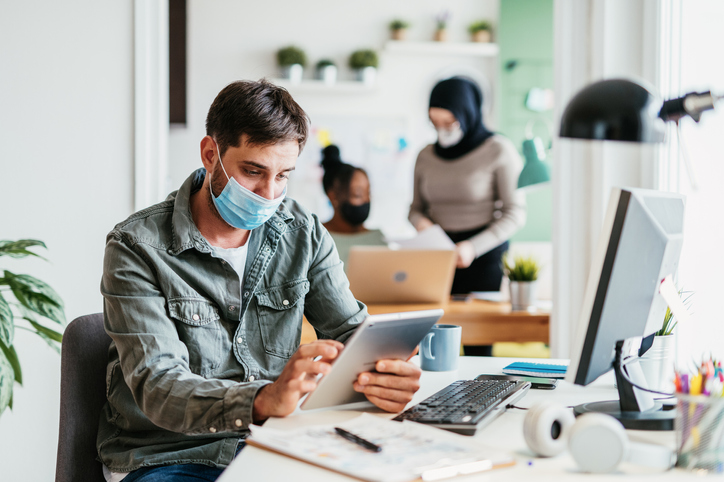How to provide a safe working environment in your office
Monday 13th June 2022

The office is an important place for a lot of people. It provides somewhere for work colleagues to meet and collaborate and should always be a safe place to work.
The majority of people who work in an office spend most of their waking day there - often more than at their own home. Post pandemic issues around safety have changed the priorities for employers, so how do you provide a safe working environment for your employees?
First and foremost, visit the hse.gov.uk website which provides all the basic rules around safe buildings, lighting and hygiene, moving around the office and suitable temperatures to work in.
As COVID-19 restrictions are being lifted, many businesses are looking forward to try and create new workspaces that align with the ever-changing requirements of the modern world with consideration on the importance of health, safety and wellbeing.
Remote and more flexible working is now common and something that needs to be considered. Many people will have been working from home for a while and returning to an office space may create feelings of anxiety. They will need to feel that there is a clear agenda in place to address any concerns they have so they feel safe.
There are steps that need to be taken to ensure an office space is safe and we have highlighted some of the main ones below:
How to provide a safe working environment:
- Be aware of concerns
- Conduct risk assessments
- Review policy and procedure
- Consider issues created by COVID-19
- Remote working
- Protect employees mental health
1. Be aware of concerns
Have open and transparent communication with your staff and find out what their concerns are about their health and safety in their working environment.
It is important to be aware of your employee’s concerns and not just assume you know what it is that they need.
2. Risk assessments
Risk assessments based around the office have been a requirement of health and safety for a long time but now need to include extra considerations to take into account levels of risk associated with COVID-19. They will need to include health risks to their employees with preventative measures that have been taken to ensure their safety.
If there are any serious events or dangers to their health, then it is important to point out the procedures that will need to be followed. Risk assessments are a great starting point and a way to put certain structures in place and provide the safe environment that is required.
3. Review policy and procedure
As guidance shifts continuously with health and safety policies, it is important that employers make sure their workplace practices are up to date.
These include mental health and safety policies in the office and for those who work away from the office in remote locations.
4. Issues created by COVID-19
If we didn’t have enough health and safety to think about, COVID-19 has introduced a whole new level of it! For example, it may now be necessary to clean surfaces in kitchen areas and computer keyboards more than we used to. If employers have become more anxious about catching bugs and viruses, then social distance measures might have to be introduced with maybe mask wearing required in the office or around clients.
Ventilating enclosed office space has been shown to minimise the transmission of viruses - it’s now important to make sure that air is well circulated from the outside to the inside so employees are not breathing in recycled office air.
5. Remote working
If you have employees that are continuing to work from home, you will need to create safety rules around those home areas too. This could include making sure that their workspace is safe - you may even need to make a home visit to check it all out, making sure they have the correct equipment to work from home including comfortable desks and chairs plus an adequate internet connection.
You will need to implement policies so that home workers are in communication regularly with office staff and managers, checking in on their mental health and give them time to raise any problems or issues around their job.
You may need to consider offering more flexible working times to your employees that work around family commitments and allow them to balance home and work in a more healthy way.
6. Mental health
Maintaining a mentally healthy workforce is possibly one of the more important aspects of creating a safe environment in the office. The last few years will have seen a significant rise in anxiety over job security, finances, illness and family issues and this will have a knock-on effect on job performance. Making sure that your environment is a safe place to raise issues around mental health and having the procedures in place if and when these issues arise is extremely important.
Having trained mental health first aiders is useful as these are people that can pick up on signs that employers are struggling and they have the skills to know how best to approach them and advise. This will go a long way to helping staff feel safe in the workplace, improve production and be less likely to leave or go off on long term sick.




